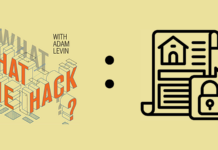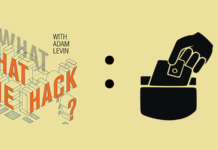

This week I had the opportunity to attend a fascinating forum in Washington, DC, to explore the myriad issues surrounding child identity theft, including foster care identity theft (a particularly cruel malady foisted upon children who already begin life behind the eight ball) and identity theft within families. The event was sponsored by the Federal Trade Commission and the Office for Victims of Crime, Office of Justice Programs, U.S. Department of Justice, and was attended by victims, businesses and representatives from federal and state governments, law enforcement, educational institutions, consumer advocates and legal service providers. It’s heartening that so many people care about this issue, but the clock is ticking, children’s futures are being compromised every day, and finding a real solution to the problem is becoming more critical by the moment.
Though a great deal has been written on the subject, of late more than ever, there is still a lack of appreciation among the general public as to the depth and severity of the problem. There is hope, however, in the form of a relatively simple registry. First, let’s consider the scope of this issue.
The Problem is Severe and Growing
Depending upon the study or report you read, from 140,000 to more than 400,000 young people per year become victims of a crime that may not necessarily impact their daily lives when it occurs, but can have devastating long-term financial and emotional repercussions.
Children Make an Easy Target
Child identity predators are drawn to the pristine credit profiles and dormant Social Security numbers of their victims, as well as their presumed invisibility in the credit system. They cannot legally apply for credit cards, “so a thief knows a child’s information is not likely associated with poor credit or linked to fraud.” As one of the conference presenters, and Credit.com partner, ID Analytics said in its presentation materials: “With a child’s SSN, a fraudster can present a credit profile equivalent to that of an emerging or new consumer (immigrant, college graduate) who has not previously interacted with the credit environment.”
No One Has Been Looking
Kids don’t check their credit reports and parents heretofore have lacked the inclination, motivation, or easy access required to review their child’s credit history. Oftentimes, the lack of inclination or motivation is due to the fact that mom or dad is the perpetrator. The crime generally goes undetected unless and until the child applies for a license, a credit card, a loan for college or, perhaps, requires a medical procedure. When they do, if their identity has been compromised—by someone having used their stolen SSN to set up credit accounts, obtain free medical care or throw police off of his trail, for example—bad things begin to happen almost instantly. In many instances the crime goes unreported because of the very human inclination not to “rat out” a parent or family member.
While the credit reporting agencies (in particular TransUnion) have begun to develop more user-friendly ways for parents to monitor their child’s identity, we in the consumer advocacy community are still searching for ways to make the process of protecting it more proactive and effective.
Of all the public/private pilot projects and proposals on the table, a somewhat controversial idea developed by Jay and Linda Foley of the San Diego-based Identity Theft Resource Center, a nationally recognized non-profit and leader in identity theft education, research, advocacy and resolution, presents the most potentially effective response. It is the 17-10 Registry.
The 17-10 Solution
Based upon the model of the Social Security Death Index, which is administered by the U.S. Department of Commerce, the 17-10 Registry would contain the names, dates of birth and Social Security numbers of every person under the age of 17 years and 10 months. Every time an application would be submitted for credit or employment, it would have to be matched against the 17-10 database. If there were a match, credit extenders and employers would be required to investigate further before approving or hiring.
The sheer existence of such a registry, which might logically fall under the purview of the Commerce Department, would provide a powerful prophylactic against identity thieves because it addresses the inability of credit issuers and others to match the Social Security numbers of minors with birth dates and names.
As expected, this proposal has generated spirited debate between privacy advocates and supporters.
Those in opposition argue that such an omnibus compilation of children’s personal identifying information is dangerous, especially if the agency which administers it fails to properly secure it. Suddenly in one fell swoop, an enterprising hacker would have access to an entire vulnerable segment of the population. Undoubtedly, this repository would be the ultimate pot of gold at the end of the breach rainbow.
The counter-argument is that we cannot shirk our responsibility to protect those who need protection out of fear that we won’t be up to the task. We cannot live in fear of “what if.”
A More Unique Identifier
Another alternative might be the development of a unique identification system by which minors would be issued an eight or ten-digit number that that would be changed to the traditional nine-digit Social Security Number when the minor turns 18.
Whatever solution is ultimately reached, there is no question that we have an epidemic within a pandemic that must be addressed as quickly as possible. Otherwise, this invisible destruction of young lives will continue, with little resistance.
Originally posted at Credit.com









